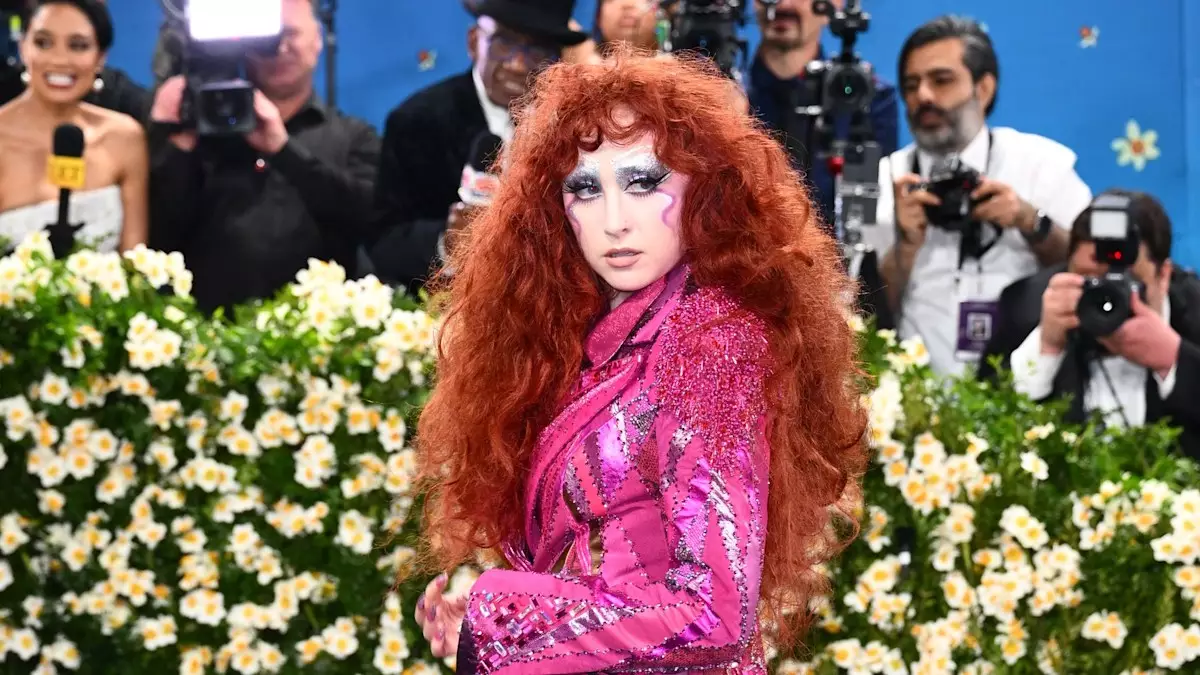Chappell Roan’s rapid ascent in the music scene has not only catapulted her into the spotlight but has also thrust her into the complex dynamics of fame that many artists dread. The “Pink Pony Club” singer has expressed her commitment to preserving her identity and autonomy, asserting that if she cannot stand up for herself, she is willing to walk away from it all. This bold declaration during her appearance on the Outlaws podcast encapsulates the struggles that many professionals, especially in the entertainment industry, face as they navigate fame’s often overwhelming pressures. The gravity of her statement demonstrates a profound awareness of the detrimental toll that fame can impose, particularly in an industry that frequently commodifies the artist’s body and persona.
From Indie Artist to Stardom: A Rapid Transformation
Chappell’s journey from an indie artist to a headlining force in just a few short months underscores the extraordinary speed at which success can unfold in today’s digital age. Her debut album, “The Rise and Fall of a Midwest Princess,” showcases her unique artistic evolution from a moody aesthetic to a more vibrant, drag-influenced style, marking her territory within a diverse musical landscape. Each track, especially her breakout single “Good Luck Babe,” has resonated widely, echoing her struggles and triumphs through relatable lyrics and an infectious pop sensibility. However, such swift ascension also raises questions about the sustainability of newfound fame, especially when juxtaposed against the toxic aspects of the industry that can hinder the well-being of emerging stars.
Boundary Issues and Mental Health Struggles
Chappell’s candid reflections on her mental health challenges related to fame serve not only as a warning but also as a rallying call for change. The singer revealed how invasive behaviors from fans, ranging from unwanted touching to aggressive social media interactions, have profoundly affected her emotional state. By declaring her entry into multiple ‘villain eras’ in response to the backlash that often accompanies her insistence on personal boundaries, she has brought attention to a critical issue that plagues many artists: the misconception of familiarity that fans create in their minds. This blurring of boundaries can lead to disrespect and even harassment, undermining the very fabric of an artist’s ability to perform and thrive in their craft.
A Bold Advocacy for Respect
Chappell’s standing up for herself goes beyond personal assertion; it evolves into a broader advocacy for artists’ rights across the industry. She has made headlines for her refusal to accept disrespect, whether from photographers at red carpet events or from fans who disregard her boundaries. This fearless stance is commendable, as it not only empowers her but also sets a powerful precedent for other artists navigating similar challenges. By demanding respect, Chappell challenges the industry’s status quo, igniting conversations about consent and the treatment of artists—issues that remain critical as the music scene continues to evolve.
Commitment to Social Advocacy
Beyond her lyrical themes and music, Chappell is an outspoken advocate for mental health and LGBTQ+ rights. Her refusal to attend Pride celebrations at the White House in protest of governmental shortcomings on queer issues exemplifies her commitment to activism over mere visibility. As a rising star, she emphasizes the importance of using her platform not just for personal gain but to foster community awareness and collective safety. This dual focus on advocacy and artistry enriches her narrative, transforming her into a role model for young artists grappling with similar dilemmas.
Looking Ahead: A Creative Future Rooted in Authenticity
As Chappell Roan continues to navigate her burgeoning career, her resolve to cultivate an environment where her identity and artistry are honored is palpable. With each new release, including her latest country-pop single “The Giver,” which highlights lesbian relationships, she reiterates her commitment to authenticity. Her trajectory suggests that the intersection of creative evolution and personal respect will dictate her future endeavors in the music industry. As she forges ahead, it remains clear that Roan will not shy away from addressing the fundamental shifts needed to protect the integrity and well-being of artists everywhere. The question remains: will the industry respond to her call for change, or will we see even more talented artists walk away, seeking a space where their boundaries are revered, not violated?

